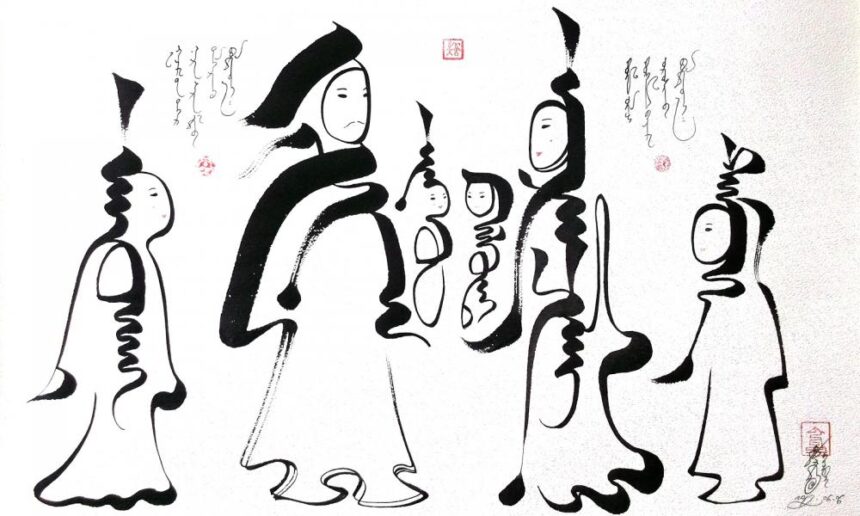The Mongolia Economic Forum 2013 under the theme “Mongolian brand” took place for two days at Government House. In order to diversify our economy with the help of mining income, the reformist government initiated this discussion on certain, realistic topics including how products from our industries such as cashmere, animal skin, meat, milk, light industry and tourism. Also discussed was how we can create appropriate macro- and micro-economic conditions for these industries to flourish.
The most common question raised during the forum was how brands are created. Although everyone was giving their own responses to this question, no definitive answer was given. It goes without saying that, without a good enough answer, it will be a long time before a Mongolian brand enters the international market. Hoping to make my contributions to this discussion, I’d like to therefore share my own opinion on how brands are created.
Companies that manage to create a competitive advantage in world markets produce brands. This dimension is a competitive place for companies rather than countries. Successful companies develop long-term policies aimed at entering world markets and implementing global strategies.
For this reason, we need to direct the focus of our discussion to a global strategy and its concepts including how they are developed and what should be included in them. When developing a strategy, companies must take two factors into account: industrial organization and location.
Profitability and economic gain differ between industries. Also, products and services produced by different companies are located at different locations within the industry. A company might change one of these factors and create a brand new condition for market competition. For example, the Samsung Group from Korea brought about a principal change in the mobile phone market by creating a new chip, screen and operational system, which influences profitability in every location.
INDUSTRIAL ORGANIZATION
Harvard Professor Porter’s team views that industrial organization is determined by five forces: 1. The threat of new entrants, 2. The threat of substitute products or services, 3. The bargaining power of suppliers, 4. The bargaining power of buyers, 5. The rivalry among existing competitors. The interrelation of forces is sometimes referred to as the “the diamond model”.
These five forces in a chosen industry can affect competition differently and their combined influence shapes overall profitability in the industry. The national structure of an industry becomes the underlying factor of future competitiveness on international markets. Also, economic policies conducted by the government can provide an advantage in competition in certain sectors. Those who work for a highly profitable industry enjoy higher living standards.
Therefore, living standards of a country are dependent on whether national companies can enter a profitable industry or not. Also, profitability is dependent on industrial organization created by those five forces rather than extent, growth rate or new technologies. That is why industry focus is an important factor influencing socioeconomic development. It is time for Mongolians to accurately determine each of these five forces and simulate our influence in the industries we intend to create a brand in.
LOCATION WITHIN INDUSTRY
Every company should ascertain what location they currently have within the industry and what location they would like to have in the future. Its location will be mainly shaped by the way the company creates a competitive advantage.
A competitive advantage can be acquired in two ways: low cost and uniqueness. Greater cost efficiency in product design, production and marketing gives a company a cost advantage. Uniqueness means that a product provides buyers with special values and advantages associated with product quality, use and customer service. Therefore, companies try to be unique with its products and reliable services, which allow them to sell them expensively.
In order to be a successful competitor, a company has to work on acquiring both of these advantages and to further focus on one of them. There is also an x factor, which is the scope and extent of market competition. The company has to choose what to produce, how to advertise it, what customers to target, where to work geographically and what related industries to compete in.
Every industry is divided into parts, which have their own particular demand and supply and advertising channels. For example, shirts can be made with different designs by personal requests and they have their own different groups of customers and promotion channels.
When you set your global strategy, your company gains a competitive advantage regarding the steps of your operation and their process. Every company has its own set of operational procedures including sales, customer services and raising capital.
The exact values produced by a company are measured by the money customers are willing to pay for their products or services.
Mongolian companies need to develop their global strategies immediately and start competing to create a brand. Global brands are usually invented by private companies. However, if government involvement proves necessary, global brands can only be achieved when those state-owned companies have ownership shares available to the public.
In order to devise our global strategies in every industry discussed during the forum, professional associations within those industries need to organize a countrywide discussion, encourage involvement from every company and start learning from international experiences.
Extended discussions can be made online with regard to every industry and its potential global strategy. If you, dear readers, leave comments below this article (www.jargaldefacto.com) about the topic, I would be happy to collect and turn them into articles for each of the industries.
2013.03.13












